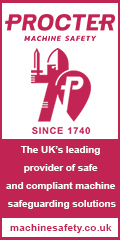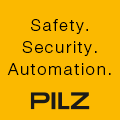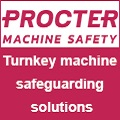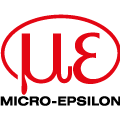
Posted to News on 9th Jul 2015, 11:35
When is a machine not a machine? When it is partly completed
Derek Coulson* explains the differences between a machine and a partly completed machine with reference to the Machinery Directive 2006/42/EC, and when it is appropriate to issue a Declaration of Conformity (DoC) and a Declaration of Incorporation (DoI).
CE marking of machinery has been with us since 1993, so it is concerning that many machinery users and manufacturers still do not do it properly. The original machinery directive was significantly modified at the end of 2009. Machinery supplied since then should comply with the current Machinery Directive 2006/42/EC, which defines machinery as 'an assembly, fitted with or intended to be fitted with a drive system other than directly applied human or animal effort, consisting of linked parts or components, at least one of which moves, and which are joined together for a specific application,'
also
'assemblies of machinery ... or partly completed machinery ... which, in order to achieve the same end, are arranged and controlled so that they function as an integral whole,'
It goes on to define partly completed machinery as
''partly completed machinery' means an assembly which is almost machinery but which cannot in itself perform a specific application. Partly completed machinery is only intended to be incorporated into or assembled with other machinery or other partly completed machinery or equipment, forming machinery to which this Directive applies;'
The difference is that machinery must carry CE marking, partly completed machinery must not.
Examples
A robot is a partly completed machine, as it has to be integrated into other machinery to carry out its functions. The hazards need to be addressed by the integrator, rather than the robot manufacturer. Something like a conveyor could be either a machine or a partly completed machine. If it is supplied with controls, and just needs connecting to a power source, then it is a machine and should carry CE marking. If it is controlled by the system it is being incorporated into, it should not carry the CE marking.
When purchasing a standalone machine that works on its own, that does not require any other equipment to feed it, and does not need any other communication with other equipment, it should carry CE marking and be supplied with a Declaration of Conformity (DoC) and an Instruction Manual.
If a machine is purchased that cannot work on its own, one that needs other equipment to work with it, that needs inter-connection, it should be considered as partly completed machinery. CE marking should not be applied, and a Declaration of Incorporation (DoI) and assembly instructions should be supplied. The equipment must not be used until the complex assembly of machines has been CE marked, and is safe.
Responsibilities
End users need to understand what their responsibilities are when ordering machines, as they have a duty to ensure that the equipment being supplied has been CE marked correctly. It is not enough to assume the manufacturer is doing it correctly; the end user should be checking that the equipment is safe, and the documentation is correct.
Under the Provision and Use of Work Equipment Regulations (PUWER), Regulation 10 specifies 'Every employer shall ensure that an item of work equipment conforms at all times with any essential requirements ... in which these Regulations apply ...'
Essential Health and Safety Requirements
CE marking is a process that must be followed to ensure that machinery meets the Essential Health and Safety Requirements (EHSRs) of the Machinery Directive. The manufacturer of the individual machinery should be checking their machinery to ensure it meets the EHSRs and recording the information in a Technical File, along with risk assessments, drawings, calculations and any other information to ensure that the machinery meets the EHSRs and is safe.
If a new machine is being created from a complex assembly of machines, it still needs to go through the CE marking process, a Technical File created, hazards created by linking the machines assessed and reduced or removed, adequate instructions provided for the assembly (not just individual manuals), and a Declaration of Conformity issued when the equipment is safe.
Technical File
The end user has no legal right to see the Technical File for purchased equipment - and often it will not exist in a hard copy form - but end users should be asking to visit the suppliers premises and review the Technical File to ensure that items such as an EHSR report, adequate risk assessments, and other reasonable information, actually exists. If the manufacturer will not allow any such inspection, then consider whether that supplier is the best one to use. Do not expect the manufacturer to supply a copy of the Technical File because there is too much information, and some of it will have intellectual property rights.
Manufacturers are also in a difficult position because many purchasers are aware that CE marking is a requirement and they want to see it on the machine, and the documentation. They often do not understand that it is a criminal offence to apply CE marking where it should not be, and pressure is applied on sales people within manufacturing organisations to provide what the customer wants to see, whether it is correct or not.
Complex assembly of machines
When machines are linked together to create a production line or complex assembly, the person assembling the line has the responsibility for the CE marking, and should create a Technical File, address the EHSRs, carry out risk assessments and ensure that the machines, and the interfaces between machines, are safe and compliant. The person responsible for this could be the end user, a prime contractor or someone appointed to take the responsibility. The contract should define who will be responsible for the CE marking of the assembly. If it is not addressed, the end user will probably end up having the responsibility, and it may be missed in the commissioning process.
There are many things that need to be considered: for example, how safety functions are connected on a number of machines, how the emergency stop system works, how interlocks work, and how to ensure that the complex assembly is safe to use. This requires discussions and design reviews with users, designers and integrators to develop a functional safety specification. There are European Normative standards (EN standards) that should be followed to ensure the functional safety of the equipment is assessed correctly, then validated. This results in a report that should be part of the Technical File, but the end user should also be provided with a copy. This is important, as if the equipment is modified in the future, this validation may need to be reviewed and reassessed. Similarly, individual machines require the same information to be available. Compliance with these standards usually requires experienced electrical engineers who understand the basics of functional safety.
End users should also be considering items such as consistency of control colours. It is a little known fact that within the electrical standard EN 60204-1 (section 10) the preferred colour for a Start control is white, while the preferred colour for Stop is black. Many machines come with green Start and red Stop, which is acceptable within the standard; however, where there is a complex assembly of machines, consistency should be applied across the system. End users also need to ensure that machinery across their sites have consistent colours, especially where operators often use different machines. Consideration should also be given to makes of components for maintenance consistency, types of guard fixings, to ensure operators are not provided with tools that allow them to dismantle parts of the machinery they should not have access to.
Maintenance considerations
The person responsible for CE marking the complex assembly needs to consider such tasks as maintenance. An individual machine may be accessible for maintenance, but when there are hoppers, gantries and other equipment in the area, then maybe access is not as easy as the original manufacturer intended, meaning that additional access platforms may need to be added. Consideration must be given to how to get tools, spare parts and components to the areas where they are needed. If access is by a ladder then it is difficult to get tools and equipment up them safely, so maybe better access needs to be provided in order that they can be lifted by forklift truck or overhead crane. If there is room for stairs, they should be provided.
If the Essential Health and Safety Requirements are addressed for each machine and assembly of machines, then all of these items, and more, should be identified, and the design should ensure that the equipment is safe to use and maintain.
It is important that someone is allocated this responsibility within the contract, and that the correct documentation is provided. As a start, it helps if the end user knows what to look for in the documentation.
Documentation
A partly completed machine should come with a Declaration of Incorporation to the Machinery Directive, the only European Directive with which a Declaration of Incorporation is used. This is a legal document, the equipment should be identifiable, by model, type, serial number, name and address of manufacturer, and this information should be repeated on the machine plate so it is obvious to which machine the Declaration applies. This should be a document supplied with the machine, not a download from a website. A list of the EHSRs that have been addressed should be provided on the Declaration of Incorporation, along with the name and address of the responsible person; the name should be printed and a signature shown. The name and address of the person responsible for compiling the Technical File should also be on the Declaration. This person should be based in Europe so that the authorities can access the Technical File if required. There should be a statement specifying that the equipment must not be used until the equipment into which it is being incorporated complies with all applicable EHSRs.
When a machine or complex assembly of machines has been installed and made safe, a Declaration of Conformity should be issued. This should list all Directives applied, should have all information to identify the machinery or complex assembly of machines, and should list any standards applied. The responsible person should sign and date the Declaration; the name and job title should be printed, as should the name and address of the person responsible for compiling the Technical File. The Declaration on the Declaration of Conformity should state that the machinery identified complies with all relevant Essential Health and Safety Requirements applicable. Finally the CE marking should be applied.
In conclusion, CE marking is something that should be considered from the start of the project. The Essential Health and Safety Requirements are a key part to CE marking so, if they are not addressed, it is likely things will be missed. Contracts need to specify where responsibility lies, and do not assume that because a company is large, they are doing it right, whether that company is the buyer or seller.
Follow the link for more information about CE marking and CE Audit services available from Safe Machine Ltd.
* About the author
Derek Coulson is a Technical Advisor with Safe Machine Ltd and has been assisting companies with CE marking of machinery since 1995. He delivers many of the PPMA machinery safety seminars, which are regularly held in Manchester, Northampton and Dublin. These cover topics include the Machinery Directive, Machinery Risk Assessment, Provision and Use of Work Equipment Regulations, Machinery Guarding and Safety in Robotic Automation.
Want the latest machine building news straight to your inbox? Become a MachineBuilding member for free today >>

















